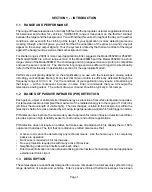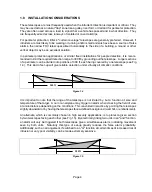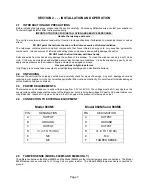
1.8
INSTALLATION CONSIDERATIONS
These telescopes are most frequently used when the intruder’s direction is important or critical. They
may be used across a natural "trap" zone like a gulley, river ford, or trail and for perimeter protection.
They are often used across a road to signal that a vehicle has passed and in what direction. They
are frequently aimed across runways of isolated or covert airstrips.
For perimeter protection, Eltec’s "curtain coverage" telescopes are generally preferred. However, if
intruders are most likely to be walking or running and/or small animals have been a source of false
alarms, the narrow FOV telescopes aimed horizontally to the side of a building, a mound or other
vertcal object may be an excellent solution.
In perimeter protection applications, or similar fixed installations for people detection, it is recom-
mended to limit the required detection range to 300 ft by grounding out the telescope. Longer sections
of a perimeter can be divided into portions of 300 ft, each being covered by one telescope (see Fig
1.4). This kind of set-up will give reliable detection under virtually all climatic conditions.
It is important to note that the range of the telescope is not limited by, but a function of, size and
temperature of the target. A car or an airplane may trigger an alarm when crossing the field of view
at a mile distance depending on the conditions. This is avoided in practice by pointing the telescopes
slightly downward or by having the telescopes face a defined background (wall, hill, or embankment).
An alternate, which is commonly chosen in high security applications, is to protect a given section
by two telescopes facing each other (see Fig 1.5). By electrically linking two units in an "and" function,
an alarm will only be triggered if both telescopes give a simultaneous alarm, indicating movement
seen by both units. Naturally this type of set-up greatly reduces the false alarm probability.
Additionally, such an arrangement, if switched to an "or" function at certain times of increased risk of
intrusion or very poor visibility, can be made extremely sensitive.
Figure 1.4
Figure 1.5
300 ft
300 ft
Page 4
























